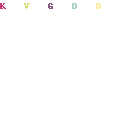National Level Snatch Techniques: Rearward Foot Displacement
Although there are many schools of thought regarding the movement, the following diagram is frequently used to illustrate the path of the bar in the Snatch:
![]() The first bump at the bottom (blue line) represents the movement from the starting position through the first pull, at which point we see it move backwards throughout the transition into the second pull, and finally we see the fish hook shape at the top, representing the catch and finish. For years, this is how the lift was taught, somewhat tight to the body (the red line) and interesecting the vertical plane above the starting position twice. It’s pulled up and away, then back inwards and “hipped” to give it the thrust of the second pull. A more dramatic look at the same motion, which is often discouraged, is:
The first bump at the bottom (blue line) represents the movement from the starting position through the first pull, at which point we see it move backwards throughout the transition into the second pull, and finally we see the fish hook shape at the top, representing the catch and finish. For years, this is how the lift was taught, somewhat tight to the body (the red line) and interesecting the vertical plane above the starting position twice. It’s pulled up and away, then back inwards and “hipped” to give it the thrust of the second pull. A more dramatic look at the same motion, which is often discouraged, is:
 As you can see, in this movement, the bar still crosses the vertical plane (the red line) of its start position twice, but with more backward motion on the first pull. Otherwise, these two trajectories are the same. However, it might interest you to know that most national level weight lifters won’t cross that line at all, through both pulls. Hold that thought for a second.
As you can see, in this movement, the bar still crosses the vertical plane (the red line) of its start position twice, but with more backward motion on the first pull. Otherwise, these two trajectories are the same. However, it might interest you to know that most national level weight lifters won’t cross that line at all, through both pulls. Hold that thought for a second.
In the Olympics, weightlifting consists of two events, the Snatch and the Clean & Jerk. Previously, the overhead press was included, for a three lift event, but that was discontinued in 1972, as it became increasingly difficult to judge. Therefore, in modern Weightlifting, the two remaining lifts have become increasingly studied and broken down by athletes, coaches, and scientists. As technology has advanced, the use of high-speed video and frame by frame analysis has become widely utilized to gain a more robust understanding of the Olympic lifts. What has happened, as a result, is that some of the preconceived notions regarding the path of the have been shown to be inaccurate. Most recently, a paper was published on the techniques and variances in found in the Snatch for the United States’ top level lifters.
The lift itself is commonly broken down into six phases:
According to this paper, there are a ton of top level lifters who actually pull the bar backwards to the extent that it never passes through the vertical plane of the start point at all (other than starting there in the first place):
The paper itself looked at national level competitors in the top three places (all national medal winners), and found that more often than not (54% of the time), they were making successful lifts with the readward displacement seen in the final diagram above. The average weight lifted was ~72% of the international record. The data indicates that rearward displacement in the drop-under phase of the snatch, although many coach against it, is actually a preferred technique at the U.S. national level, and is globally coached. Similar studies have been done at the elite level in other countries with the same outcome, and although counterintuitive to some, and not coached by many outside of elite circles, the rearward displacement technique is actually the best way to move maximum weight.




